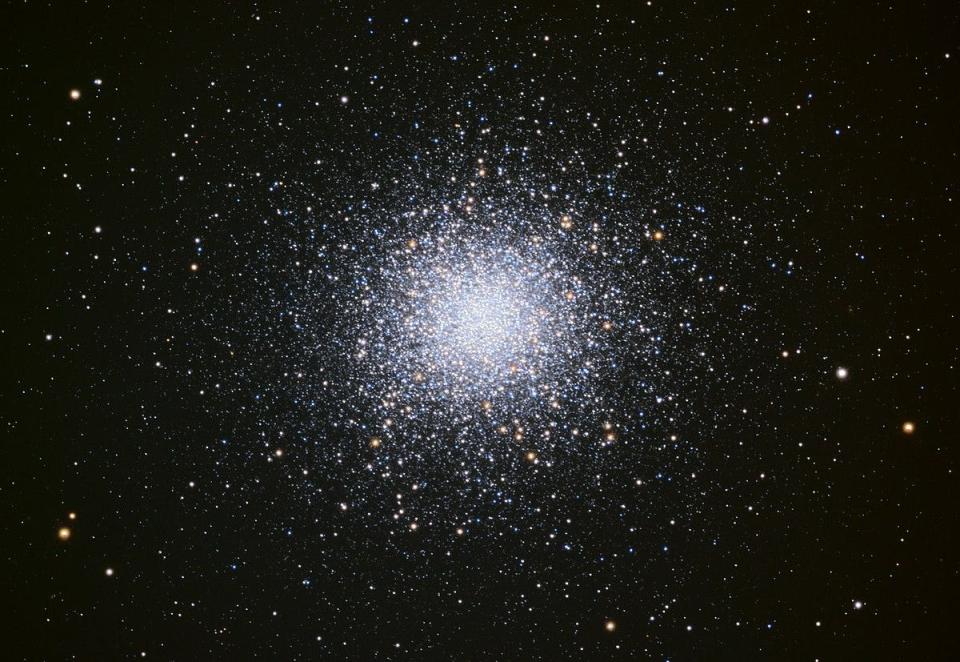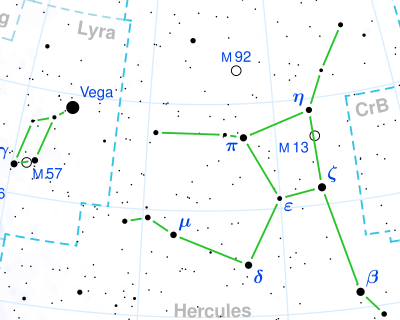'Celestial cities' dot Pennsylvania's nighttime skies. Here's how to see them
Globular clusters are like celestial cities ― millions of stars packed closely together like urbanites in any megalopolis. You can see some of these the next clear, moonless night with only a pair of binoculars.
Looking like a fuzzy star in binoculars, the view in even a small telescope can be astounding.
They are so distant that few can be glimpsed by the naked eye. The best is Omega Centauri, the largest and brightest globular associated with the Milky Way galaxy. It is visible low in the southern sky from the southern United States but is best seen from the Tropics and Southern Hemisphere, where it reaches high in the sky. From rural areas, Omega appears to the naked eye the size of the full moon.
More: A supernova 'only' 21 million light-years away has been spotted. Here's how you can see it.
Once you learn the constellations and practice with a good star guide that provides detailed charts, you are underway.
Remember, it is summer, so you must stay up until late evening to see the most stars in the darkest sky. Let your eyes adapt to the darkness and avoid any glare from house or street lighting. Bring your star chart, binoculars and a flashlight covered with red paper to preserve your night vision.

One of the easiest globulars to find is the spectacular M13, located in the constellation Hercules and high up in the southern sky as evening twilight recedes on a July night as seen from Pennsylvania latitudes. It is just visible to the naked eye from a dark rural area.
Notice the four stars making the shape of a keystone (appropriate for Pennsylvania!). It is an "asterism," part of the constellation Hercules. M13 is found on the side of the keystone facing west, on your right. Use binoculars to scan this area; M13 appears as a small, fuzzy dot, about halfway up the side towards the upper right-hand star of the keystone (known as Sophian).
With a telescope of at least 4 inches, first use low magnification and gradually switch to higher magnifying eyepieces. You will witness the grandeur of these celestial cities. The greatest concentration of stars is towards the center (downtown?!) and thins out from there, creating its fuzzy appearance in celestial "suburbia". How well you can resolve a globular cluster into stars depends on its nearness and brightness, the steadiness of the air, your telescope size and eyepiece.
M13 is about 22,200 light years from Earth.
You can find dozens of globular clusters on a summer night; even in a telescope, most will appear exceedingly small and dim, evoking wonder at the grand scale of the galactic neighborhood. Several, however, are showpieces. Among these are M13, M3, M22, M10 and M5, spread across the constellations.

M22 is one of the best, but from Pennsylvania latitudes it stays low in the sky, near the seven stars outlining the Teapot asterism of the constellation Sagittarius. It is due south around midnight in mid-July. From a semi-rural area, you may be able to see how the billowy Milky Way band seems to rise from the Teapot's spout like steam. M22 is close to the back of the handle.
Globular clusters are dense spheres of stars; some have millions of members, bound together by their combined gravity. They are made up of older stars and are found circling galaxies. The Milky Way has approximately 150 known globulars. One might imagine the stars packed so close they touch, but they average about a third-light year apart in center (about 1.9 trillion miles). The closest star system to our sun is 4.3 light years away.
Imagine how star-studded the sky would appear from the middle!
New moon is on July 15; look for a morning crescent this week. After the 15th there is an evening crescent, leading up to first quarter on July 23.
Keep looking up at the sky!
This article originally appeared on Tri-County Independent: Spot these celestial cities while stargazing in the Poconos PA

